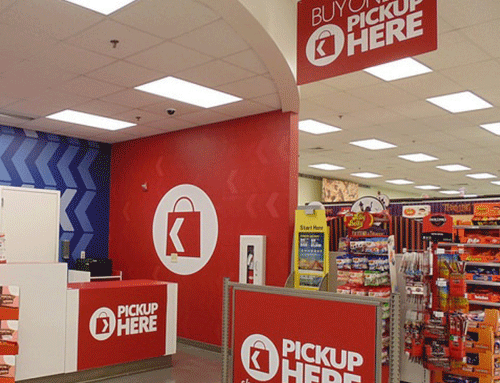Technology in the retail sector has long assisted in its growth and sustenance. It is both necessary and important for the retail sector in its onward march of meeting the business goals and customer needs.
In this ever-changing, modern world, the forces of demand and supply keep modifying the way retail business is conducted. This makes it vital for commercial organizations to adopt the new technology frontiers to keep up with the ever-changing market.
The buzz words of the present day are mobility and communication. The dynamic work culture and the changing business requirements make it mandatory for the workers to stay in touch and remain ever updated.
The frontline workers who fulfill the trade requirements need these facilities the most. They need to stay in touch with their offices and require to communicate with others whenever required. For them, mobility and communication are essential in every sense.
“As per the Oxford Economics Maximizing Mobile value report, mobile devices are critical to the success of an enterprise. It is estimated that there is an 82% increase in employee productivity due to mobile communication devices. These devices increase the customer satisfaction level by 76% and even the employee satisfaction jumps by 70%. Not surprisingly, the revenue is also estimated to grow by 70%. Also, the use of mobile devices results in increased agility and speed of decision making”.
The top trends in enterprise mobility:
Having understood the need for mobility in the enterprise industry, let’s look at the latest mobile tech trends in the present-day business scenario.
- Enterprise tailored apps: Organizations are increasingly going for tailor-made apps to increase productivity and move towards higher customer satisfaction. Tailor-made apps reduce functional redundancy and provide user-specific functions. This results in both employee satisfaction and better work output.
- Increase in ‘Bring Your Own Device’ policy: Businesses are encouraging their workers to bring in their own devices. This in turn assists the frontline workers as they are familiar and comfortable with their handheld electronics. There are however two challenges in front of the companies while adopting the BYOD policy: They need to ensure that the devices have enterprise grade security & the IT department of the business at times has to struggle to keep up with the wide range of electronics which the employees tend to have.
- Increase in use of cross-platform apps: Businesses are increasingly using apps that work on multiple platforms. This assists the BYOD policy of the organization as it allows the use of tailor-made apps on multiple platforms.
- Increased use of hybrid cloud technology: In hybrid cloud technology, the client hosts critical applications at its servers while hosting the other applications on the cloud providing more flexibility and data deployment options.
In fact, at present, 85% of the businesses are leveraging the hybrid cloud route. This number is poised to go up shortly.
- Use of Artificial Intelligence: Companies are increasingly using Artificial intelligence to improve their products, services, and business processes. Ai is helping in decision making, customer services, operating efficiency, and thereby the sales revenue. AI is also helpful in increasing the productivity of the employees and generate more jobs.
- Use of multi-level security system: In a multi-level security system, data with different security sensitivities are provided different levels of access which in turn reduces the risk of it getting compromised. This feature is particularly useful in the BYOD environment where various users have different requirements.
The advantages of mobility in the enterprise:
The use of the latest mobile technology in the enterprise has several advantages. The retail industry is increasingly becoming customer-centric and data-driven. The choice of correct technology for your enterprise leads to boosting employee’s performance. This in turn increases productivity and revenue of the company. Some of the advantages are mentioned below:
- The frontline workers can see real-time data and make informed decisions. They can complete their work with higher accuracy, confidence, and efficiency. Additionally, mobile solutions mean that employees don’t have to go to their workstations for status updates saving time and efforts.
- Frontline managers also have the option of using a unified platform having all information on the operations giving them the flexibility of taking decisions relating to the employees, vendors, and customers. They can take real-time, on-the-go decisions to boost the sales and revenue of the company.
- High tech mobility solutions lead to higher customer satisfaction. As per International Data Corporation, 63% of the global enterprises regard mobility as the most important factor contributing to competitive advantage. Also, every seven in ten organizations cite it as a top priority. Due to online retailing, customers expect real-time engagement which in turn requires real-time action from the businesses. This leads to the essential use of mobile technology in enterprises.
- The use of mobile PDA computers allows the integration of front, middle, and back offices in a business. The data stream from the point of sale through customer service, warehouse, and other components in the supply chain, enables sellers to deliver unmatched customer experience and be confident that they will be able to meet any challenges ahead.
- The advances in mobile technology when adopted in business helps seamlessly fulfill omnidirectional sales. Nowadays, businesses are adopting multi-channel sales to maximize their revenue in these challenging times. The mobile technologies provide an easy and effective method for fulfilling the customer requirements up to their expectations while sustaining and growing the business.

Conclusion:
The adoption of the latest advancements in mobile tech has helped the frontline workers fulfill the business requirements and work effortlessly towards expanding their enterprise. This has not only increased their productivity but also has paved the way for increased customer satisfaction. Since the adoption of modern-day mobile technology allows the frontline workers to meet the customer expectation, this in turn has led the way to a loyal clientele. The amalgamation of mobility and communication has helped businesses scale new heights and business houses are hopeful of continuously doing so in the coming times.









